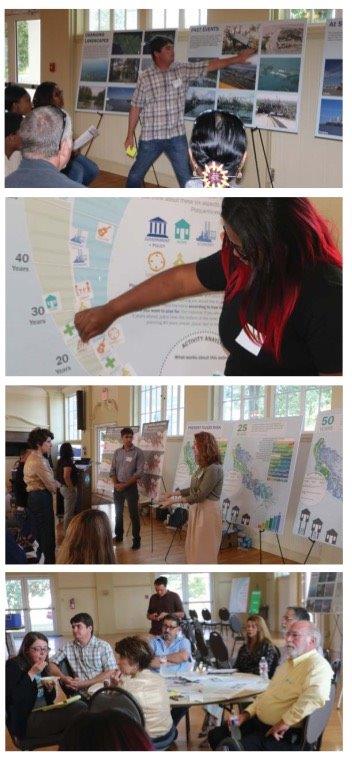Breakout Innovation: Collaborative Planning for Sustainable Coastal Communities
“As our population sky-rockets, climate change restructures the ecosystems we inhabit, and our unsustainable food systems begin to break down, our world is crying out for designs that re-imagine the way that we humans do pretty much everything on Earth – designs that are in greater alignment. We appear to be stuck working only with what can be observed and already exists, rather than imagining and creating what is trying to emerge.” – “Creating Breakout Innovation,” Stanford Social Innovation Review, May 18, 2017.
This paragraph is taken from a cover story article published today in the Stanford Social Innovation Review (SSIR), as a part of its global review, and takes notice of our Restore the Mississippi River Delta coalition work in Louisiana, listing the work along with other global examples reflecting “breakout innovation.”

Plaquemines Resiliency community meeting with Concordia.
Based on our work here, staff members from our coalition, along with staff from the Foundation for Louisiana and local planning firm Concordia, were recruited to participate in a “co-learning” process with the authors, as they sought to distill principles that could guide and measure “co-creation” community design efforts. That co-learning process resulted in this article.
The highlighted work is part of our overall effort to restore the Mississippi River Delta and is specifically focused on finding means to make sure that communities impacted by coastal land loss and sea level rise are able to participate directly in their futures through “authentic” planning efforts – rather than simply having those futures controlled by top-down decisions where they have little say, or by the next storm.
Our work was essentially catalytic and supportive, beginning with an effort in Plaquemines Parish, one of the “ground zero” parishes for coastal change. We provided information, concepts, facilitation and support, but we left the decision making about process and substance to the community.
This inclusive approach to community planning, initially supported by the Rockefeller Foundation and the Foundation for Louisiana, has now been extended to other parishes in southeast Louisiana as a part of a remarkable state project dubbed LA SAFE. Our hope is that this kind of approach can be extended to all 24 coastal parishes in Louisiana.
Few people would argue that the people in a community – city, town, school district or however a community is defined – don’t have the right to participate in decisions that will impact them. Yet conventional approaches to community planning, whether it be for a new school or for adaption to major change such as climate-driven sea level rise or even for recovery from a disaster such as Hurricane Katrina, have traditionally left little room for true engagement at the community level.
The SSIR article adds support for a broader discussion about results, arguing that the outcomes of authentic, inclusive planning approaches produce better results. This conclusion is absolutely consistent with our experience on the front lines of adaptation here in Louisiana.
Just as Louisiana is ground zero for finding solutions to sea level rise and climate adaptation, so too is it ground zero for co-creation and innovative planning. And the lessons learned here can be a prototype for how authentic planning can be done in other places facing similar challenges from rising seas and increased storms.
We are honored to be featured in this Stanford Social Innovation Review cover story, and we hope the lessons in the article can be used by other coastal areas around the country findings ways to live and thrive in a changing world.
The full text of the SSIR article is available now for subscribers and will be made available to the public next month.